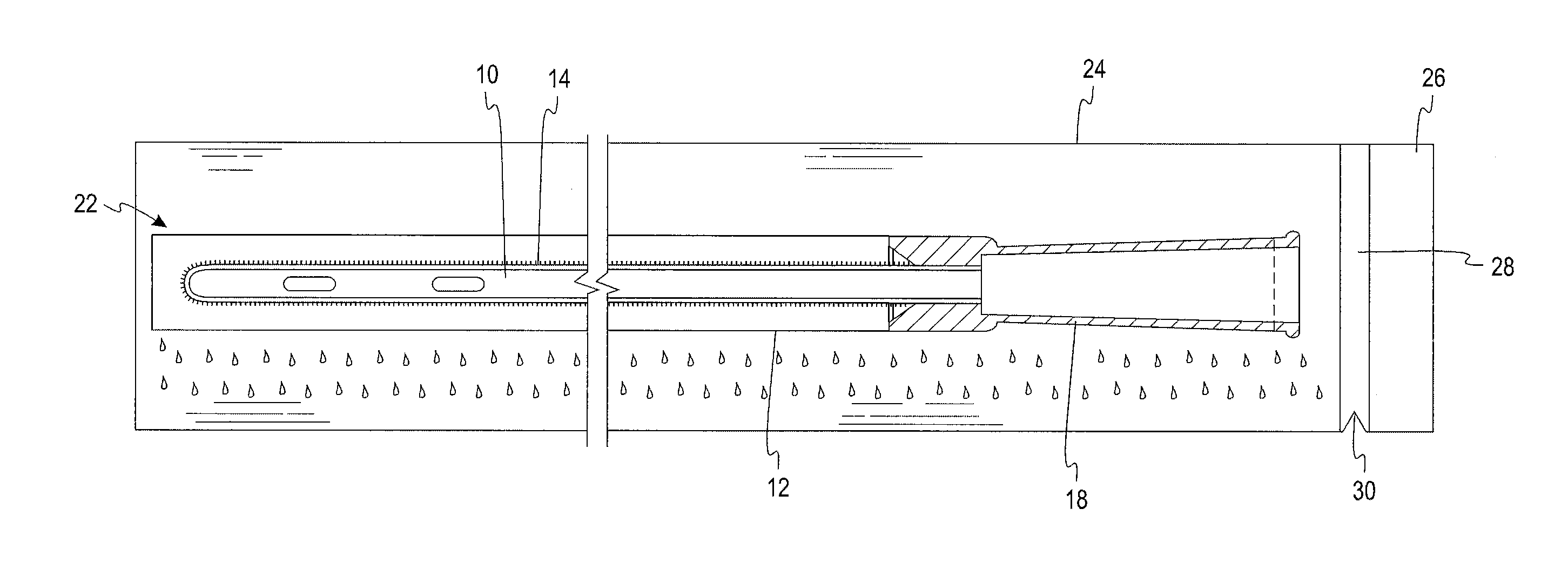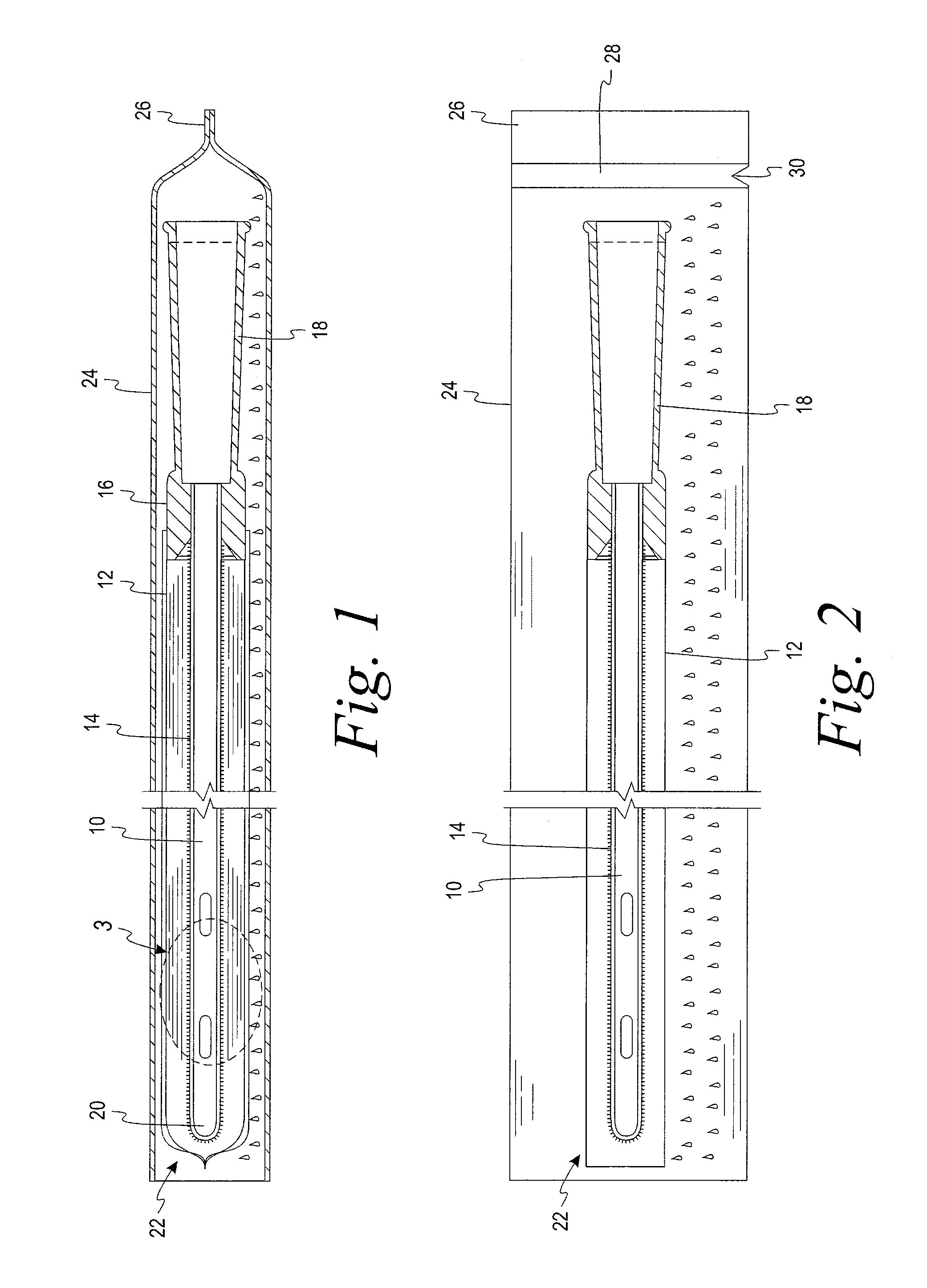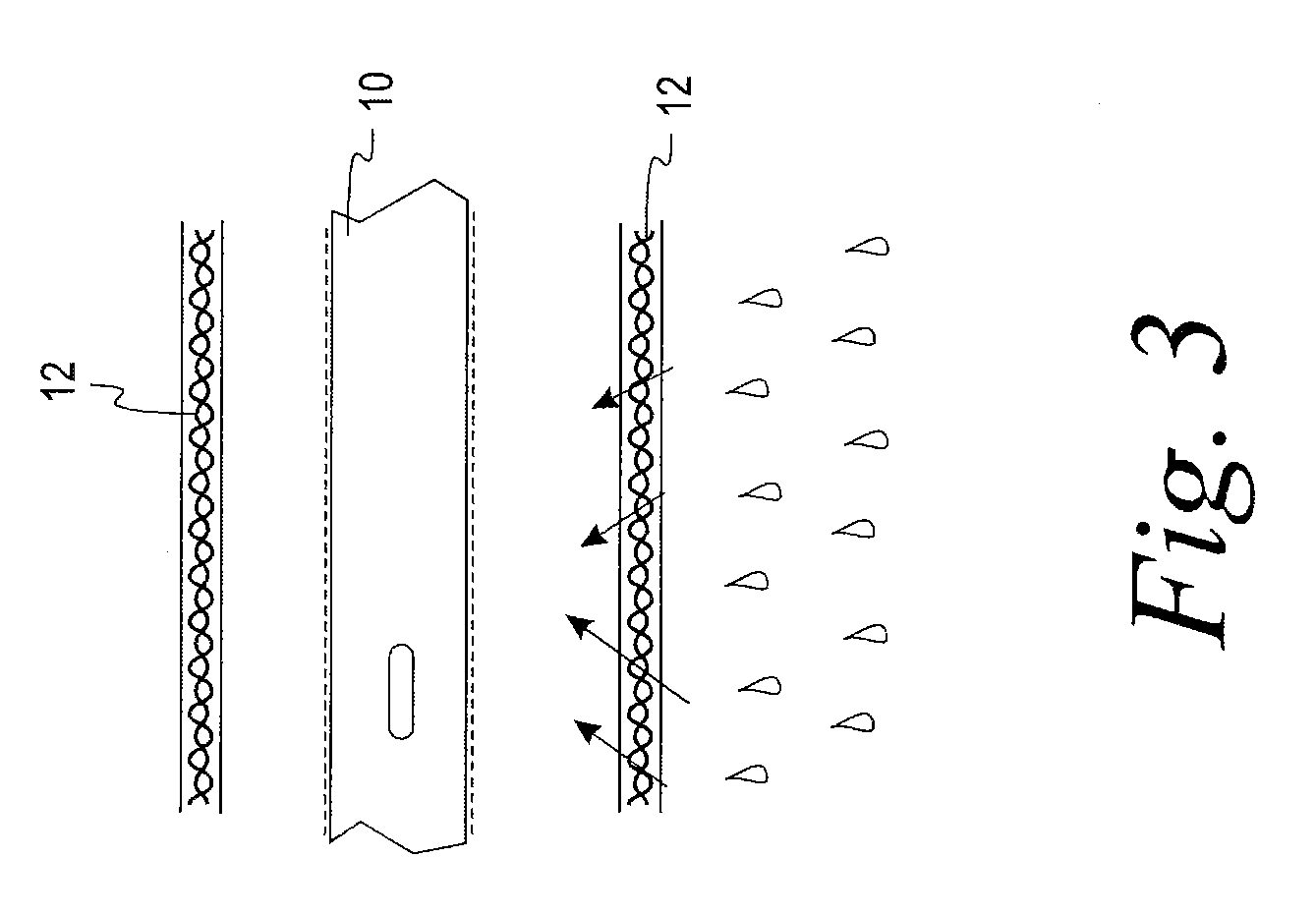Vapor hydrated medical device with low surface energy sleeve
a medical device and surface energy technology, applied in the direction of transportation and packaging, catheters, wound drains, etc., to achieve the effect of reducing wetness or sliminess
- Summary
- Abstract
- Description
- Claims
- Application Information
AI Technical Summary
Benefits of technology
Problems solved by technology
Method used
Image
Examples
example 1
[0023]A test was devised and performed to determine the extent to which wetness of a sleeve is reduced by the structural arrangement of the present disclosure. The test involved six initially dry hydrophilic-coated intermittent catheters, each placed in a respective initially dry sleeve constructed of a liquid impermeable GORETEX® Medical Membrane, which is a material that is said to have preferential vapor permeability. The sleeve was constructed with the GORETEX® Medical Membrane material oriented such that its water vapor permeability preferably permits the flow of water vapor in a direction from an exterior of the sleeve to an interior of the sleeve to a much greater extent than the extent to which water vapor can flow in a direction from the interior of the sleeve to the exterior of the sleeve. Low surface energy material is used in the formation of the sleeve in an effort, notwithstanding the permeability of the sleeve to water vapor, to avoid significant accumulation of water...
example 2
[0024]A second test was devised to verify and quantify the extent to which wetness of a sleeve is reduced by the structural arrangement of the present disclosure when the samples were conditioned for 6 weeks under a laboratory environment. According to this test, a first, initially dry, hydrophilic-coated intermittent catheter was placed in an initially dry sleeve constructed of a liquid impermeable, low surface energy GORETEX® Medical Membrane material. A second initially dry, hydrophilic-coated intermittent catheter was placed in an initially dry liquid impermeable Mylan Medifilm 437® polyurethane sleeve. Each of the dry sleeved catheters was then sealed in a separate liquid and vapor impermeable foil package just after a water-soaked fabric was provided in the foil package, such that the package had not begun producing a vapor atmosphere prior to introduction of the dry sleeved catheter. The two foil packages were placed in a store room and left for six weeks at a temperature of ...
example 3
[0026]A third test was devised to quantify the extent to which wetness of a sleeve is reduced by the structural arrangement of the present disclosure when the samples are stored under harsher conditions in an oven at 40° C. (104° F.) and 75% relative humidity (RH) for four weeks. According to this test ten initially dry, hydrophilic-coated intermittent catheters were placed in an initially dry sleeve constructed from GORE-TEX® Medical Membrane PTFE material. Similarly, ten initially dry, hydrophilic-coated intermittent catheters were placed in an initially dry liquid impermeable Mylan Medifilm 437 ® polyurethane sleeve. Each of the dry sleeved catheters was then sealed in a separate liquid and vapor impermeable foil package just after a water-soaked fabric was provided in the foil package, such that the package had not begun producing a vapor atmosphere prior to introduction of the dry sleeved catheter. The two foil packages were placed in an oven at 40° C. (104° F.) and 75% RH, to ...
PUM
| Property | Measurement | Unit |
|---|---|---|
| Water contact angle | aaaaa | aaaaa |
| Water contact angle | aaaaa | aaaaa |
| Surface tension | aaaaa | aaaaa |
Abstract
Description
Claims
Application Information
 Login to View More
Login to View More - R&D
- Intellectual Property
- Life Sciences
- Materials
- Tech Scout
- Unparalleled Data Quality
- Higher Quality Content
- 60% Fewer Hallucinations
Browse by: Latest US Patents, China's latest patents, Technical Efficacy Thesaurus, Application Domain, Technology Topic, Popular Technical Reports.
© 2025 PatSnap. All rights reserved.Legal|Privacy policy|Modern Slavery Act Transparency Statement|Sitemap|About US| Contact US: help@patsnap.com



